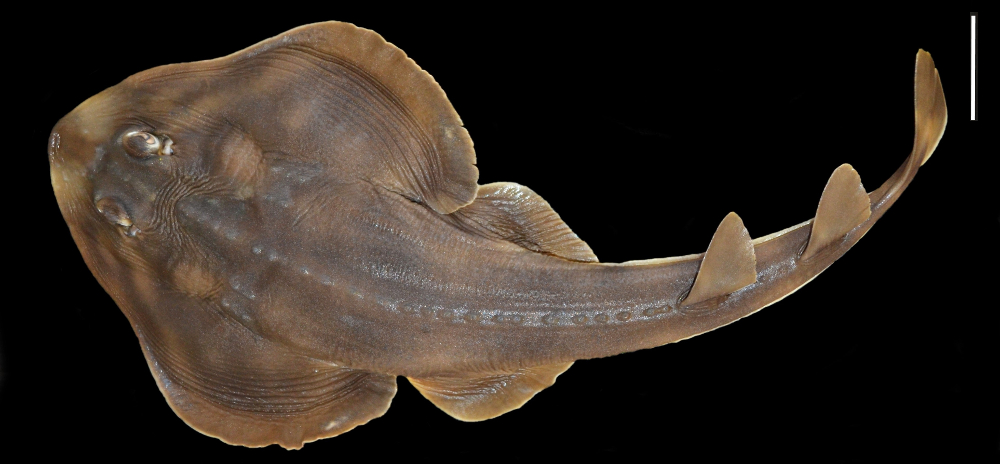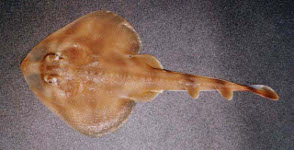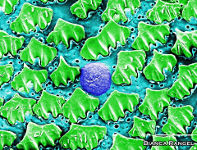Zapteryx brevirostris
(Müller & Henle, 1841)
Lesser guitarfish
Classification: Elasmobranchii Rhinopristiformes Trygonorrhinidae
Reference of the original description
Systematische Beschreibung der Plagiostomen. Berlin, Veit, pp. 1–200
Systematische Beschreibung der Plagiostomen. Berlin, Veit, pp. 1–200
Image of the original description
.jpg)
Zapteryx brevirostris (Müller & Henle, 1838)
.jpg)
Zapteryx brevirostris (Müller & Henle, 1838)
Synonyms / new combinations and misspellings
Rhinobatos brevirostris, Rhinobatus brevirostris, Rhinobatus (Syrrhina) brevirostris, Syrrhina brevirostris, Zapterix brevirostris
Rhinobatos brevirostris, Rhinobatus brevirostris, Rhinobatus (Syrrhina) brevirostris, Syrrhina brevirostris, Zapterix brevirostris
Description :
Citation: Zapteryx brevirostris (Müller & Henle, 1841): In: Database of modern sharks, rays and chimaeras, www.shark-references.com, World Wide Web electronic publication, Version 12/2025
Please send your images of "Zapteryx brevirostris" to info@shark-references.com

Zapteryx brevirostris (Müller & Henle, 1838), Female mature (pregnant), 42, 3 cm TL, 21, 0 cm DW Guarujá, São Paulo, Southern Brazil © Bianca de Sousa Rangel, University of São Paulo (IB-USP)

Zapteryx brevirostris (Müller & Henle, 1838), Female mature (pregnant), 42, 3 cm TL, 21, 0 cm DW Guarujá, São Paulo, Southern Brazil © Bianca de Sousa Rangel, University of São Paulo (IB-USP)
Common names
 Guitarra chica,
Guitarra chica,  Guitarra ñata,
Guitarra ñata,  Poisson-guitare nain,
Poisson-guitare nain,  Lesser guitarfish,
Lesser guitarfish,  Shortnose guitarfish,
Shortnose guitarfish,  Raia,
Raia,  Viola,
Viola,  Viola-de-cara-curta
Viola-de-cara-curta
 Guitarra chica,
Guitarra chica,  Guitarra ñata,
Guitarra ñata,  Poisson-guitare nain,
Poisson-guitare nain,  Lesser guitarfish,
Lesser guitarfish,  Shortnose guitarfish,
Shortnose guitarfish,  Raia,
Raia,  Viola,
Viola,  Viola-de-cara-curta
Viola-de-cara-curta
Short Description
Obtuse snout, broader heart shaped disc. Olive to brownish gray above, without definite markings, dorsal and caudal darker than general ground tint, margins of pectoral and pelvic fins paler. Lower surface grayish or yellowish white, posterior corners of pectoral fins and tips of pelvic fins more or less dusky [199].
Obtuse snout, broader heart shaped disc. Olive to brownish gray above, without definite markings, dorsal and caudal darker than general ground tint, margins of pectoral and pelvic fins paler. Lower surface grayish or yellowish white, posterior corners of pectoral fins and tips of pelvic fins more or less dusky [199].
Human uses
fisheries: minor commercial; price category: medium; price reliability: very questionable: based on ex-vessel price for species in this family
fisheries: minor commercial; price category: medium; price reliability: very questionable: based on ex-vessel price for species in this family
Biology
Exhibit ovoviparity (aplacental viviparity), with embryos feeding initially on yolk, then receiving additional nourishment from the mother by indirect absorption of uterine fluid enriched with mucus, fat or protein through specialised structures [733].
Exhibit ovoviparity (aplacental viviparity), with embryos feeding initially on yolk, then receiving additional nourishment from the mother by indirect absorption of uterine fluid enriched with mucus, fat or protein through specialised structures [733].
Habitat
demersal; marine
demersal; marine
Remarks
shark-references Species-ID=7548;
shark-references Species-ID=7548;
Parasites (arranged by Jürgen Pollerspöck)
Cestoda
Nematoda
Isopoda
Cestoda
- Acanthobothrium sp. [25154] [31906]
- Acanthobothrium zapterycum Ostrowski De Núñez, 1971 [16365] [25154] [26364] [28741] [31906]
- Halysioncum pigmentatum (Ostrowski De Núnez, 1971) [16365] [16430] [19536] [25154] [31906]
- Phyllobothrium sp. [25154] [31906]
Nematoda
Isopoda
- Nerocila acuminata Schioedte & Meinert, 1883 [31244]


















